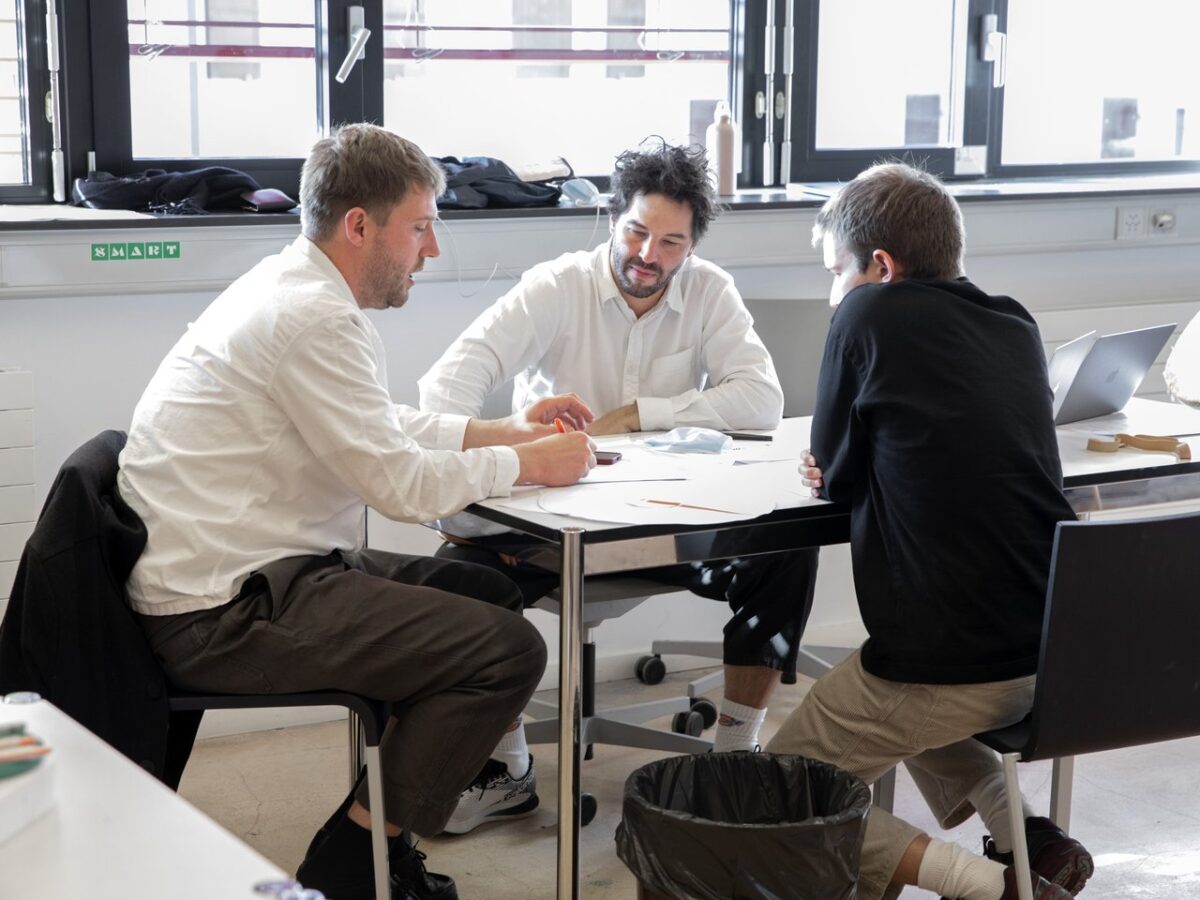Summary – To ensure a digital product’s success, distinguishing product design (strategic vision, ROI prioritization, and business alignment) from UX design (usability, user research, and user-centered iterations) is essential to eliminate misunderstandings and accelerate time-to-market. Both roles co-create specifications and prototypes through agile rituals to ensure functional coherence and an optimal experience from the MVP to scaling and redesign.
Solution: establish shared governance, adapt the design team to each lifecycle phase, and leverage a modular open-source architecture for rapid iterations and controlled scalability.
In an ecosystem where every design decision impacts the success of a digital product, distinguishing product design from UX design is essential for structuring a project and optimizing resources. These two disciplines, often conflated, have complementary goals: one focuses on product strategy and alignment with business objectives, the other on user experience and ergonomics. By clarifying their responsibilities and establishing clear collaboration processes, companies reduce the risk of misunderstandings and accelerate time-to-market.
Clarifying Roles: From Business Needs to User Experience
Product design defines the overall vision, positioning, and priorities of the product. UX design focuses on interactions, ergonomics, and end-user satisfaction.
Product Design: Vision and Prioritization
The product designer initiates strategic thinking by identifying market opportunities and aligning the roadmap with business objectives. Based on market research and competitive analysis, they structure features into successive phases, prioritizing those with the highest ROI impact. This approach relies on clear metrics (development cost, value delivered, technical risks).
At the core of their role, the product designer also defines the product’s positioning, unique value proposition, and target customer segments. They formalize personas and usage scenarios to guide functional decisions and prevent scope creep during development. This structuring avoids late-stage trade-offs and ensures alignment with the company’s strategy.
UX Design: User-Centered Research and Prototypes
The UX designer, for their part, adopts a user-centered approach from the initial scoping workshops. They conduct interviews, user tests, and co-creation workshops to understand needs, frustrations, and behaviors. These insights inform the creation of wireframes, user journeys, and interactive prototypes.
Each prototype is evaluated through usability testing, enabling rapid identification of friction points and interface adjustments before any heavy development. By conducting multiple short iterations, the UX designer ensures fine-tuned adaptation to real expectations and avoids producing irrelevant or misunderstood features.
Governance and Cross-Disciplinary Collaboration
To ensure seamless collaboration, product and UX designers co-create the specifications: the product designer contributes the functional vision, the UX designer the user perspective. Joint reviews and shared milestones validate both business value and interaction quality.
An agile governance, where both profiles participate in the same rituals (sprint planning, sprint reviews, retrospectives), fosters continuous exchange. Decisions are then made through a dual lens, ensuring both strategic coherence and ergonomic efficiency.
Concrete Example of Separation Between Product Designer and UX Designer
A Swiss industrial company approached us to launch a B2B spare parts ordering platform. Our product designer developed a value proposition canvas prioritizing order speed and stock transparency, while the UX designer conducted workshops with field operators to create a simplified three-step navigation flow. This coordinated approach reduced average order processing time by 30% even at the MVP stage.
Complementarity: From Ideation to Product Validation
When product design and UX design work in concert, the digital platform ensures both business relevance and user adoption. Their cross-disciplinary methodologies accelerate hypothesis validation and optimize investments.
From Product Research to User Testing
The product designer formalizes value hypotheses to test: revenue impact, adoption by key segments, potential for upmarket growth. Each hypothesis is turned into proto-hypotheses to be validated by the UX designer through qualitative and quantitative studies.
User testing (A/B testing, moderated tests, heatmaps) provides objective data to adjust the roadmap. It enables quickly discarding low-efficiency features and reinvesting in higher-value levers.
Iterative Prototyping and Continuous Feedback
A low-fidelity prototype sketches the information architecture, while a high-fidelity prototype refines visual design and micro-interactions. At each iteration, user feedback is integrated into the backlog, feeding product prioritization.
This iterative loop reduces the risk of overdevelopment and encourages the market release of progressive versions, validated at each step by a representative panel.
KPI Alignment and Usage Monitoring
To monitor impact, product and UX designers jointly define key indicators (task completion rate, Net Promoter Score, generated revenue). Analytics and session replay tools provide continuous field feedback.
Usage data guides trade-offs, ensuring the product’s evolution is performance-driven while keeping user satisfaction at the core of decisions.
Concrete Example of Complementarity Between UX Design and Product Design
A Swiss financial services group adopted this approach for its mobile portfolio management app. Product and UX designers conducted moderated session tests, revealing that 40% of testers stalled at the strong authentication step. Thanks to these insights, the team pivoted to a more elegant biometric solution and increased the service activation rate by 25%.
Edana: strategic digital partner in Switzerland
We support companies and organizations in their digital transformation
Adapting Profiles to the Digital Project Lifecycle
At the MVP stage, flexibility is key: favor a product designer who can quickly validate hypotheses and a UX designer focused on lean research. During the scale phase, reinforce teams to structure growth and ensure a consistent experience across all channels.
MVP: Agility and Rapid Validation
When launching an MVP, the goal is to test key hypotheses with a minimal set of features. The product designer focuses on defining these essential features and developing a batch-based roadmap, while the UX designer conducts rapid tests (guerilla testing, paper prototyping) to validate intuitiveness.
This lean setup allows for feedback gathering within weeks and iteration without burdening the structure. Decisions are based on tangible results rather than speculation.
Scale: Structuring and Standardization
Once the MVP is validated, the challenge is to prepare for scale and ensure cross-channel consistency. The product designer broadens the product vision, refines the roadmap, and introduces governance processes (feature reviews, scoring-based prioritization). The UX designer documents UI/UX guidelines and establishes a modular component library to standardize interfaces.
Integrating design systems enhances development speed and facilitates continuous evolution while adhering to a unified visual and interaction language.
Redesign: Expertise and Controlled Transition
In a redesign, the goal is to modernize an existing solution while preserving the user base. The product designer conducts a functional audit and defines a roadmap to migrate critical features without service disruption. The UX designer maps aging journeys, identifies breakpoints, and proposes new interaction patterns.
This phased approach, supported by coordinated iterations, ensures a smooth transition and minimizes impact on satisfaction and adoption.
Aligning Product and UX Design in a Digital Agency
An experienced agency organizes its teams to provide cross-functional product leadership, from defining features to validating with users. It combines agile methodologies, open-source solutions, and a modular ecosystem to ensure performance and scalability.
Overall Scoping and Technical-Functional Roadmap
At kickoff, the agency facilitates multidisciplinary workshops where product and UX designers work with business stakeholders to formalize the vision, objectives, and project milestones. Deliverables include a prioritized backlog and a concrete action plan, aligned with business imperatives and technical constraints.
This initial scoping can be built around open-source blocks and modular microservices to minimize vendor lock-in and ensure the application’s long-term scalability and flexibility.
Prototyping, Testing, and Rapid Iterations
The agency develops interactive prototypes that integrate reusable components, then coordinates testing sessions with representative users. Each finding is documented and prioritized with the product designer to adjust the roadmap.
This iterative approach, based on concrete feedback, limits development waste and ensures functional relevance before significant cost commitments.
Scaling Up and Continuous Monitoring
During deployment, the agency structures an evolving support system: test automation, UX and business KPI monitoring, incremental updates. Product and UX designers remain involved to manage releases and ensure experience consistency as new features are added.
The modularity of the architecture and use of open-source stacks (light front-end, asynchronous APIs, containers) ensure controlled scaling and prevent future bottlenecks.
Concrete Example
An emerging Swiss services company entrusted us with a complete redesign of its B2C platform. The plan was divided into three phases: scoping, A/B-tested prototype validation, and deployment with an Angular-based design system. The iterative cycle allowed for monthly user feedback integration, reducing churn by 18% in six months while adhering to the initial schedule.
Build a High-Performing, Aligned Digital Product
By clearly distinguishing product design and UX design and orchestrating them collaboratively, you maximize business impact and user adoption. The project’s maturity levels—MVP, scale, redesign—dictate the design team’s composition and intensity, while a modular, open-source approach ensures scalability and longevity.
Whatever your context, our Edana experts are ready to support you in designing a digital solution that combines strategy, experience, and technological robustness.







 Views: 1404
Views: 1404